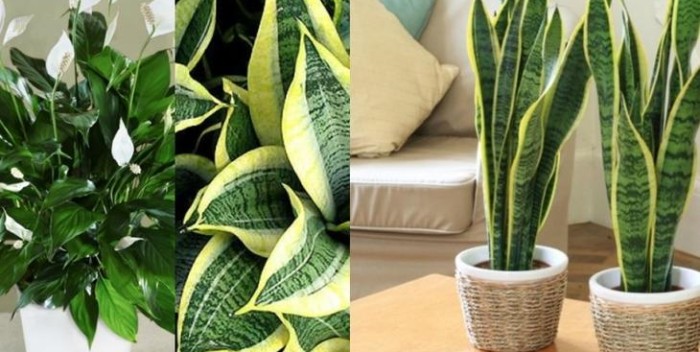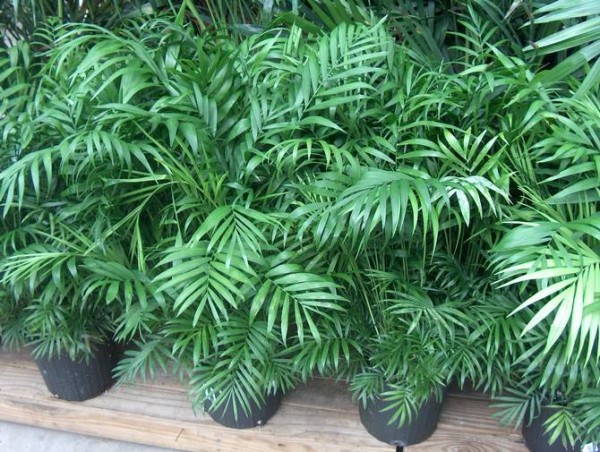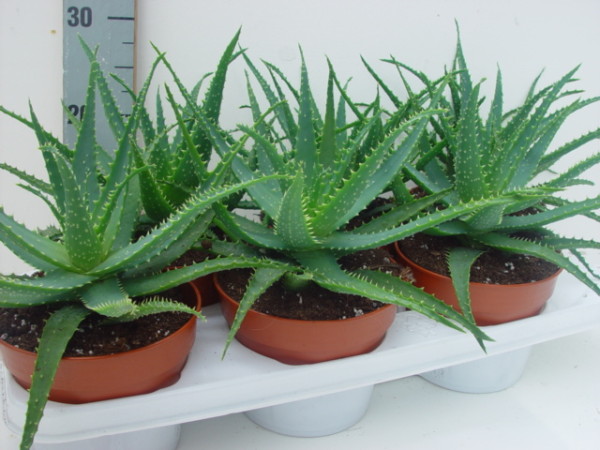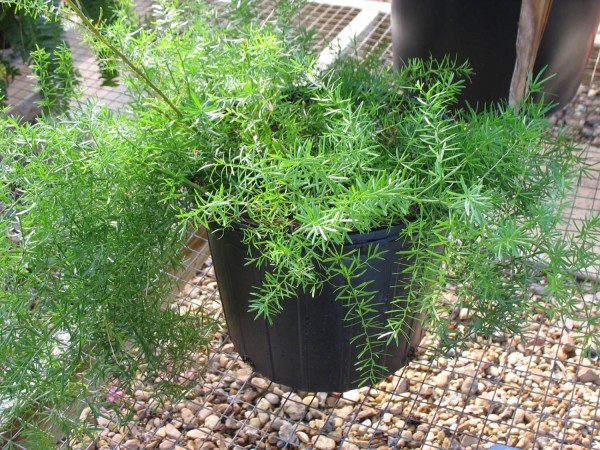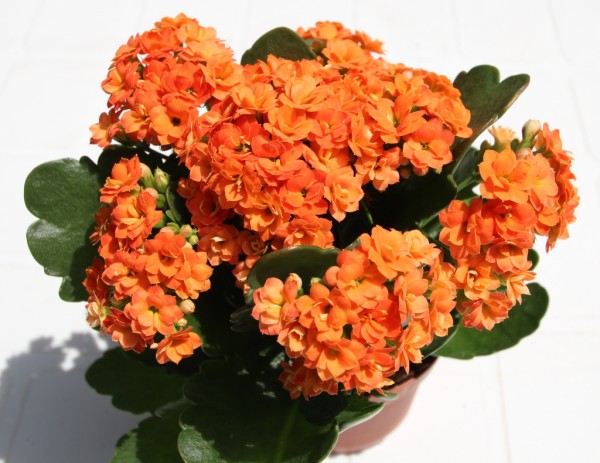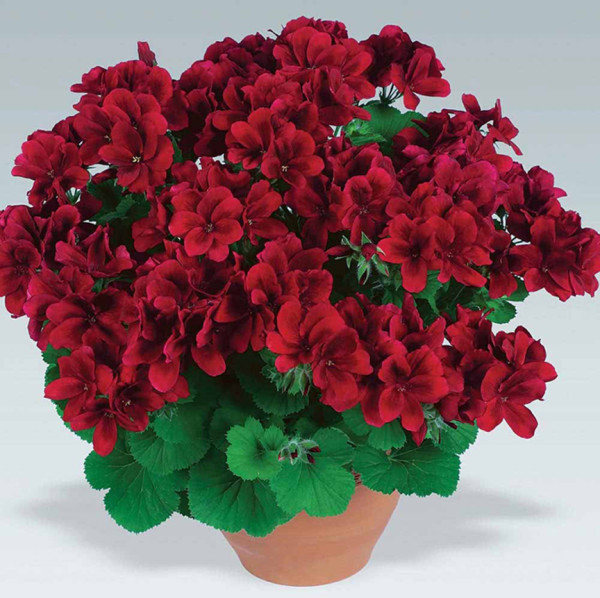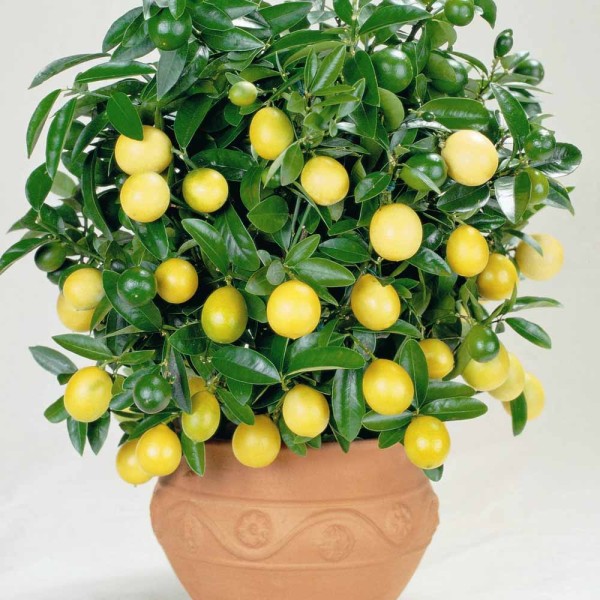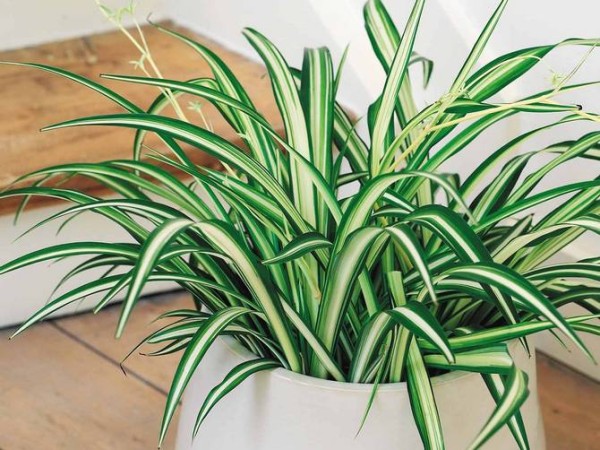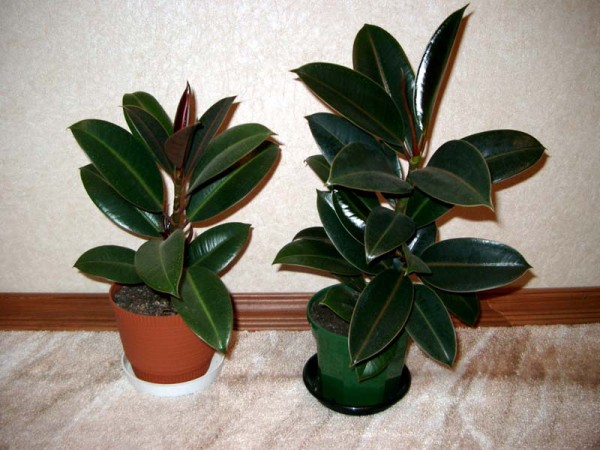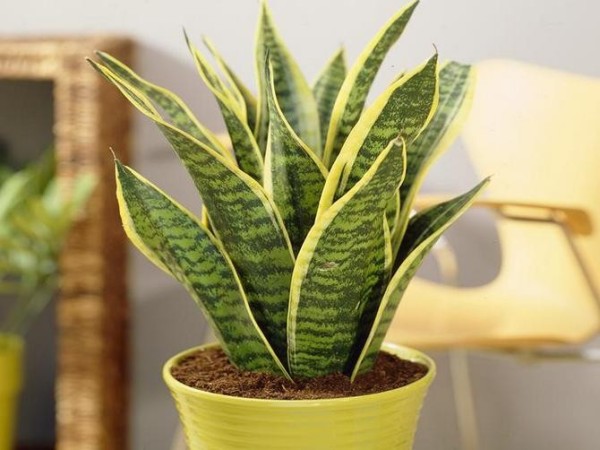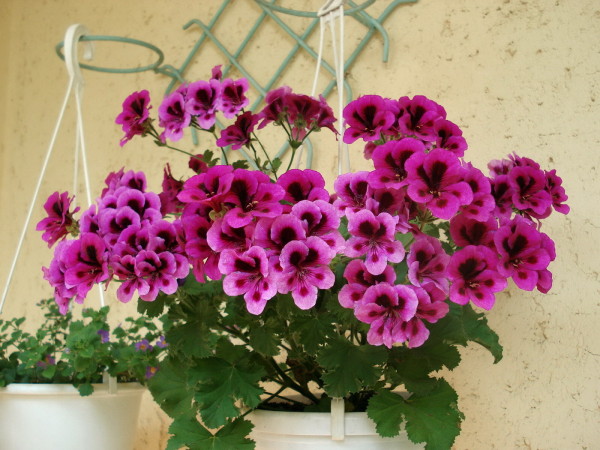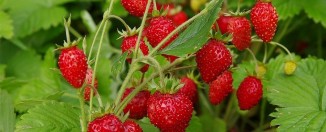Useful indoor flowers
Flowers fill our life with aesthetic beauty, looking at them comes relaxation and tranquility. The same applies to aromas that come from plants. But in addition to visual appeal, almost every flower carries many useful properties that few people know about. So, today we will give a list of indoor plants that would not hurt to have within the house, as well as what kind of good service they can do.
Content
Hamedorea
This plant is a kind of house palm, and it belongs to this family. A very compact and beautiful plant that can easily find a place in the office, and even in a small apartment. The big advantage of hamedorea is that it is not whimsical. The trunk of this plant is very thin, it reaches 1.2 meters in height, however, in indoor conditions it can grow up to two meters. The leaves are thin, have a rich green color. Chamedorea blooms at a young age, about three to four years old, with small yellow flowers that are fragrant. After flowering, small berries appear in these places, the size of which is about a pea.
Hamedorea cleans the indoor air from harmful impurities such as benzene, formaldehyde, etc. The plant serves as a natural air humidifier, which will be very useful in the cold season, when the heating in the apartments dries everything out. In addition, the plant is absolutely safe for people and pets, therefore, if the latter suddenly decide to taste chamedorea, you can be absolutely calm about their health.
Home bamboo palm relieves households from melancholic mood and pessimism, gives vigor. Due to these qualities, it is better to place it in offices, if we are talking about offices, or in the living room, if we are talking about an apartment. But the bedroom is not the best place for her "residence", otherwise it will be problematic to sleep, because it contributes to the opposite effect.
Aloe vera
Aloe vera, more popular under the title of aloe or fool, is a very useful plant. It is not so much attractive externally as for its unique healing qualities.
The main property of the plant is bactericidal. It resists pests such as staphylococcus, dysentery and diphtheria bacillus and streptococcus. Aloe is effective in radiation, inflammatory diseases, wound healing, as it significantly accelerates cell regeneration. It also acts as an immunomodulator, contributing to the overall health of the body. The active substances in its composition help to improve intestinal motility, providing all possible assistance when eliminating constipation... In a minimum dosage, it normalizes the processes of digestion and bile secretion.
It was from the juice of this plant that the antibiotic barbaloin was created, which is applicable in the treatment of tuberculosis and skin diseases. Its effectiveness was also seen in the elimination of pancreatitis. gastritis, conjunctivitis and stabbing and other health problems.
In the treatment, the sap of a plant that has reached the age of three is mainly used. It is upon reaching three years that the maximum amount of nutrients and useful substances accumulates and forms in it. Only the lower leaves are cut, the length of which is no more than 18 cm. However, for the purpose of healing wounds, you can use not the gel (juice), but the leaf itself, cut lengthwise and applied to the sore spot. The same way toothache can also be cured. And if you pour 150 g of carefully crushed leaves with cut thorny "details", pour honey heated in a water bath (300 ml) and insist for 24 hours, you can get a mild and natural laxative. And how not to mention its miraculous benefits in getting rid of acne and post-acne.
In addition to medicine, the plant is widely used in cosmetology. With its help, nourishing and regenerating masks for face and hair, lotions and gels for washing, creams and much more are created. Therefore, it would not be at all superfluous to acquire such a doctor for your own use. It is only best to take a three-year-old plant at once so that you can immediately benefit from it.
Asparagus
This plant has more than three hundred species. Belongs to the asparagus family. Some of the species can be eaten, this is the very famous asparagus. However, this is already a vegetable variety that is grown on plantations. But all these species differ significantly in their appearance. The plant is widespread on all continents, it can be found in a variety of climatic zones. For the most part, these are perennial shrubs, grasses and vines. The leaves are more like small needles. Asparagus is not at all whimsical to care for and grows remarkably both in open and closed ground. Houseplants are often used for landscaping children's rooms, or for creating vertical compositions.
This plant secretes substances that contribute to the rapid and successful healing of wounds, the healing of bone fractures, and also significantly increase the elasticity of the skin. Asparagus is very useful for people suffering from respiratory diseases. It tends to absorb heavy metals and kill harmful bacteria. Ideal for enclosed spaces, be it an office or an apartment. The main thing is to be able to open windows from time to time.
Kalanchoe
Kalanchoe is a perennial plant that is green in both winter and summer. Its shoots are very dense and beautiful. In the wild, Kalanchoe can be found exclusively in Africa, as well as on the nearby islands. Indoors, this flower is grown more as a medicinal plant than as an element of the interior.
Kalanchoe has a haemostatic, anti-inflammatory and bactericidal effect. With its help, wounds heal. Fresh plant juice contains a huge number of useful components, which include: tannins, organic acids, flavonoids, enzymes and trace elements. This inner wealth allows it to be used in the treatment of purulent wounds, dead tissue, ulcers, boils, burns. The juice gives good results with cervical erosion and bleeding.
The plant treats acne and acne, removes pigmentation both on the face and on the body. Medicines, which include Kalanchoe extract, help restore and restore vision. And if you grow a flower in dark rooms, then even more nutrients will accumulate in it, which will help to cope with various diseases.
Most often, the plant is used in medicine. For example, a tincture made from Kalanchoe is rubbed into the skin, which leads to an improvement in blood circulation, which prevents blockage of blood vessels.
For the treatment of trophic ulcers and boils, you can use just such a simple, self-prepared ointment. Combine 15 ml of plant juice with 25 g of lanolin and 25 g of petroleum jelly. Mix everything so that a homogeneous mass is formed. That's all, the wonderful remedy is ready!
For varicose veins, the following tincture is used. A liter jar must be filled with Kalanchoe leaves, previously finely chopped. Pour everything with vodka, to the very edges of the container. Close the lid and place in a dark corner for a week. After that, wipe the affected areas with tincture, in a circular motion, moving from bottom to top. The duration of such treatment is from two to three months.
And finally, one more very interesting recipe that acts as the prevention of influenza. It is very simple: squeeze juice from a Kalanchoe leaf and wipe the nasal mucosa with it three times a day. The same fresh juice can be used to treat inflammations of the mouth, ears, eyelids, burns and skin diseases.
It is worth remembering that the plant is strictly contraindicated for use in the perinatal period, in the presence of allergies. Kalanchoe is also contraindicated for people suffering from liver disease, hepatitis, cirrhosis, low blood pressure and tumors.
Pelargonium
It is often possible to see how pelargonium is referred to as a synonym for geranium, so many people mistakenly believe that this is the same thing. But this is not the case. The only thing that unites them is their belonging to the Geraniev family. Pelargonium is intended for indoor cultivation, and geranium for outdoor cultivation.
Despite all the external attractiveness, the flowers of pelargonium do not smell at all. The scope of this plant is very wide, consider some of them.
- For the treatment of toothache. Apply a cut leaf of a plant to the problem area and wait for the pain to completely disappear.
- To normalize the pressure to the left hand, where the pulse is felt, tie a leaf of the plant for half an hour.
- In order to dissolve kidney stones and salt, prepare the following decoction. Chopped leaves and roots, in the amount of one tablespoon, pour a glass of boiling water, put on fire and bring to a boil. After that, leave to rise for five minutes on the lowest heat. As soon as the prepared broth has cooled, it should be filtered and taken a couple of tablespoons before meals.
- Pour a couple of tablespoons of dry grass with cool, pre-boiled water (a couple of glasses). Let it brew for about two hours. Strain. The infusion is drunk throughout the day in small portions. This composition is used in the postpartum period, for a quick recovery, as well as with uterine bleeding. Douching can be done with the same composition.
- For the treatment of infertility within a month, you need to take the aforementioned infusion in half a glass 3 times a day.
- To stop hair loss, you need to wash your hair with the following composition for two weeks with an interval of 1-2 days. Pour a couple of tablespoons of dry grass with half a liter of boiling water and boil for about five minutes. Then let it stand for an hour, drain.
- To treat otitis media, knead a leaf of a plant, roll it into a tube and stick it into your ear.
- To get rid of anal fissures, boil a couple of tablespoons of dry leaves in a liter of water for a quarter of an hour. Strain the composition and apply in the form of lotions.
- For sore throat, sore throat and stomatitis, you can rinse with a composition made from a handful of dry grass and a liter of water. All this needs to be boiled for a quarter of an hour. Insist, strain and cool.
Homemade lemon
Many people like to drink tea with lemon, but in order to benefit from this citrus, it must be grown without the use of chemicals. Nobody can guarantee that there are natural products on store shelves. But there is a way out - to grow mini lemons in your own apartment. In addition to a natural product, you will receive a wonderful aroma that will envelop the entire room and a very beautiful plant that will decorate the interior.
The aroma of lemon is not only pleasant, but can strongly influence the psycho-emotional state of a person. Interestingly, a lot of what prompts the scent of this citrus has to do with financial well-being. Therefore, it is very good to place it in rooms where there are constant conversations about money or thoughts about financial well-being. Homemade lemon cleanses the aura of the apartment and frees the thoughts of households from obsessions. Its aroma pushes a person to action and new achievements.
But this plant is useful not only for its aroma, but also for its fruits. By the way, do not try to grow lemon at home from purchased citrus seeds. Firstly, this is no longer a homemade lemon, and secondly, such attempts, as a rule, do not lead to the appearance of fruits.
As with any citrus, lemon contains vitamin C, which helps to boost the immune system. The fruits contain a lot of different vitamins that have a beneficial effect on all areas of the human body.
- Lemon leaves relieve fever.
- The fruits of the plant increase appetite, improve digestion, and help reduce the level of bad cholesterol in the blood.
- If you rinse your mouth with lemon juice, you can suppress inflammation in the oral cavity. Only the juice must be diluted with water, in the proportion: half the fruit, half a glass of water.
- Lemon peel can help relieve headaches. To do this, remove the white skin from the peel and attach the latter to the temples on both sides. Sit in this position for about 15 minutes. After that, red spots may appear on these places - do not be alarmed, this is normal, just like the itching and burning sensation. The headache will soon subside.
- If you feel the onset of sore throat, slowly chew fresh lemon zest. After that, you can not eat and drink for about an hour. During this time, the essential oils and acid will “work” on the sore throat. This procedure must be carried out every three hours.
- Lemon can also be used to treat corns. Thoroughly steam your legs in a decoction of any herb, it is better to take a series, celandine or oak bark. After that, attach the lemon peel with pulp to the problem area and tie. Repeat the same procedure for three days. Then unpick your legs again and very gently remove the corn.
Lemon juice is often used to treat oily and problem skin. Lotions are made from it, added to masks. It perfectly whitens the skin, relieves age spots and post-acne, dries acne and relieves redness. But you need to be extremely careful with it, as it can cause allergic reactions, so do not work with it if you have sensitive skin. Before use, conduct an allergy test, and if there are no negative reactions, you can implement what was planned.
Chlorophytum
Chlorophytum is rightfully called a home ecologist. In addition to its visual appeal, it is especially respected for its ability to purify the air. Considering the quality of oxygen in the modern world, this is an invaluable plus. That is why many hostesses install it in the kitchen or in places where someone regularly smokes. All harmful substances are absorbed by it, and at the exit it gives clean air. In comparison, it can neutralize up to 80% of the harmful effects of gas stoves.
There is scientific evidence that Chlorophytum kills pathogenic microflora on an area of about two square meters. Therefore, in order to sterilize the room air, only a few pots are needed. And one more scientific fact that near a flower kills up to 80% of microbes.
In addition to its warlike qualities, it perfectly moisturizes the air and creates a favorable microclimate in which it is very easy to breathe. That's just in order for him to give moisture, he first needs to be given it, so do not skimp on watering it. You can increase the release of moisture if you add activated carbon to the water for irrigation.
The flower successfully captures and keeps harmful and dangerous substances inside, such as carbon monoxide, acetone, ammonia and other chemical elements. Therefore, it will become a real salvation in places where there is contact with such "pests". By the way, an interesting feature was noticed, the more harmful and chemical components, the more actively Chlorophytum grows.
A group of scientists once conducted an experiment in order to check how many chemicals Chlorophytum can absorb (and it really feeds on harmful emissions, therefore it grows faster in disadvantaged places). So, what was their surprise when the plant in one day created an almost sterile environment around itself (which is often observed in operating rooms), absorbing all the filth. And the most interesting thing is that it tarnished the reputation of many microclimate generators produced on an industrial scale, showing the best results in air purification and humidification.
Ficus
This is a very popular houseplant due to several factors. Firstly, it is not at all whimsical to care for, and secondly, it is miniature and will fit perfectly on the windowsill without taking up much space. But before deciding to grow it, you need to know that according to research, this plant is one of the three leaders in terms of the number of those who are capable of causing allergies.
Do not forget that ficus secretes milky juice containing rubber, which has a detrimental effect on asthmatics. In general, milky juice is considered poisonous, so it is better not to contact with it. If it comes into contact with the skin, it can cause severe irritation. Be careful not to let animals and children come into contact with him. These are just precautions that must be followed strictly.
Speaking about the benefits, it is worth noting its feature to filter the air, absorb the dust that hovers in the apartment. In medicine, ficus is used for the treatment of arthritis, mastitis and radiculitis. Special infusions are prepared from the leaves of the plant, with which lotions and compresses are then made. And, of course, it is simply beautiful, so it will delight the owners with its appearance.
Sansevieria
What names does this plant have, and the mother-in-law's tongue, and the pike's tail, and the tongue of the devil, and the serpentine scythe. About 70 species of this evergreen stemless plant are now known. It can be very often seen in a variety of premises, from apartments to government offices, and all because Sansevieria does not require special attention. It can calmly grow and develop in full shade or in direct sunlight, it is almost never touched by pests and the rarest watering is not afraid of it, just like drafts and too dry or humid air. The only thing that can become destructive is the bay and a long stay at 0 ° С.
So, what are the advantages of Sensevieria:
- the flower gives off a lot of oxygen;
- it purifies the air and kills bacteria;
- those who are near the plant significantly increase their immunity;
- able to neutralize harmful fumes;
- absorbs the main harm of radiation from computers;
- in China, they believe that he cleans the energy in the house, absorbing all the bad;
- the smoke of burning leaves has been used for centuries as an effective remedy for headaches.
Rumor has it that if the flower is placed in the house, then quarrels and troubles in this room will be much less. But it is extremely undesirable to put it in the bedroom and children's room, since it has a very strong energy, an excess of which will not benefit anyone. It is necessary to be treated with this plant very carefully - poisonous substances are included in the composition of its leaves. But it is they who act as an ingredient in some choleretic, diuretic and laxative drugs.
Home geranium
Geranium is one of the popular plants among the people. That's just the right way, it should not grow within the apartment, but on the street. Therefore, such a "pet" is ideal for summer residents and owners of private houses. For some time, everyone was delighted with geraniums, the ladies even decorated their hats with flowers of plants and, in general, decorated themselves with it. A wide variety of medicines were prepared from its juice, which fought against burns, ulcers and inflammations.
Geranium-based oil has been used for a long time to relieve fatigue and pain in the spine from muscles. Compresses with it draw out pus from wounds and contribute to the rapid tightening of ulcers. In order to get rid of a runny nose, you need to drip a couple of drops of geranium oil into your nose. Ear pain can be soothed in the same way.
The headache is relieved by simply applying oil to the temples, and bad mood and depression go away with it. There are a great many recipes using geranium to treat ailments. The leaf of this plant for its medicinal properties can be safely compared with the road one. If you apply it to the wound, then the blood will stop, the reproduction of pathogenic microbes will stop, and the damage itself will heal faster.
Tinctures of plant roots help to cope with hypertension, forget what insomnia and nerves are. It is also applicable for diarrhea, gastritis and colic. At all times, she was credited with the properties of neutralizing poisons and relieving stress.
Mother Nature has made sure that a person always has everything he needs at his fingertips. If you fully understand the healing power of plants, then you will realize that you can live a happy, long and at the same time healthy life without the use of chemically derived drugs. What we have considered today is only a small fraction of what these plants carry, besides, in addition to them, there are others that are no less useful.
